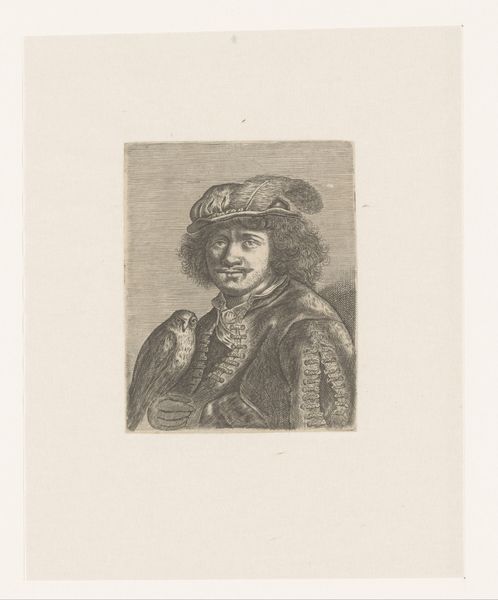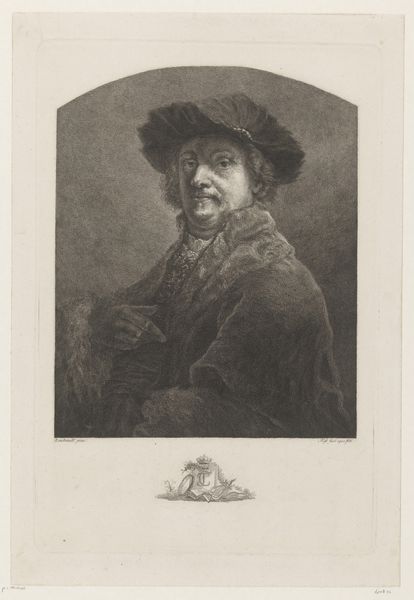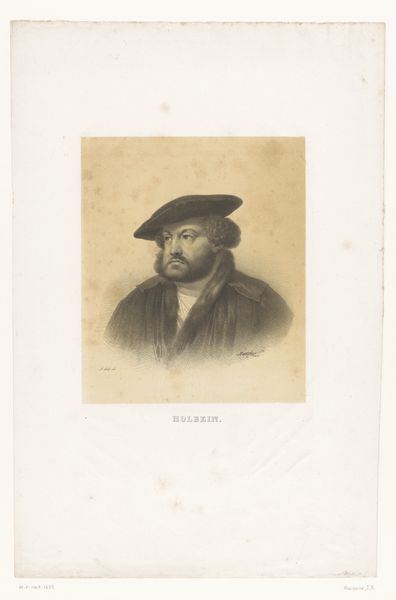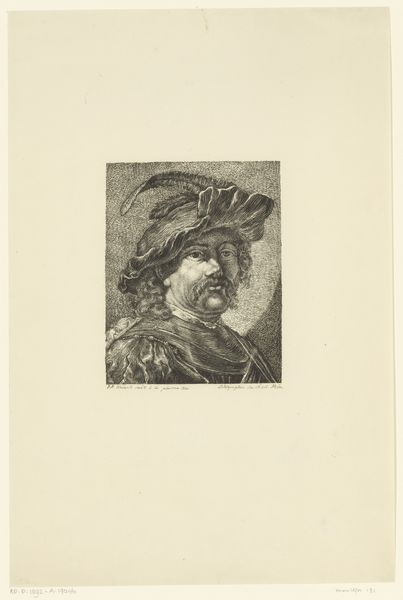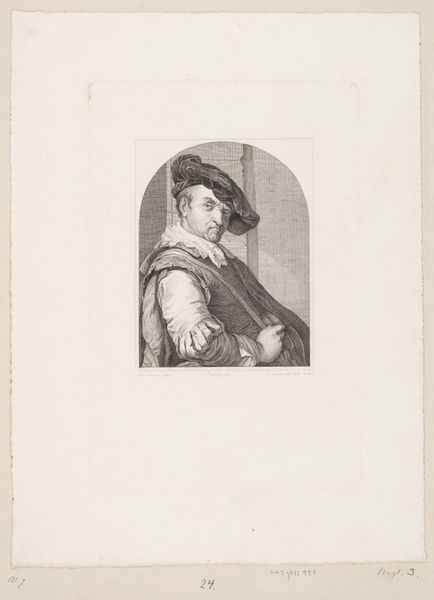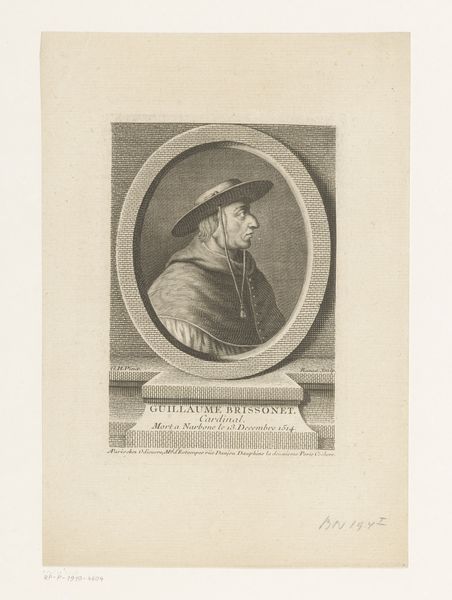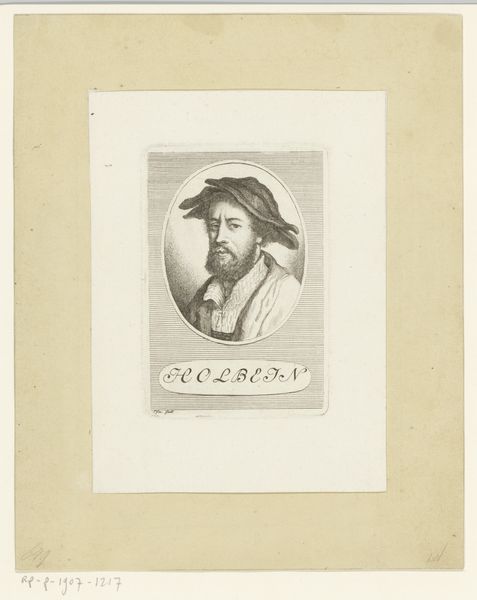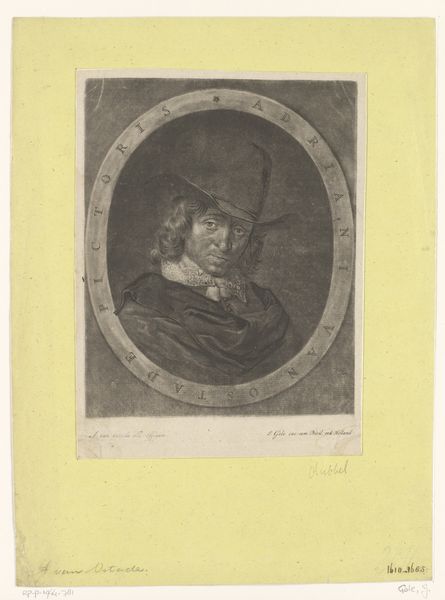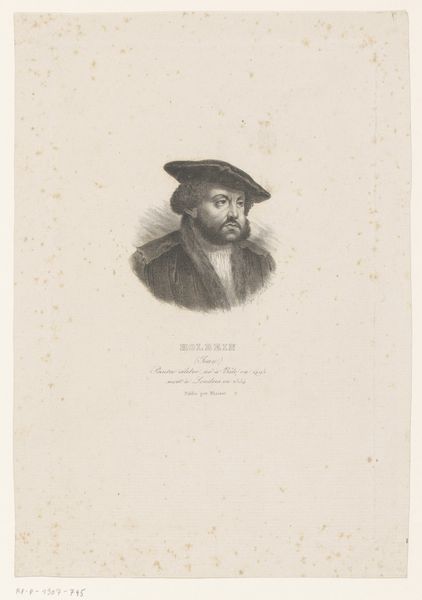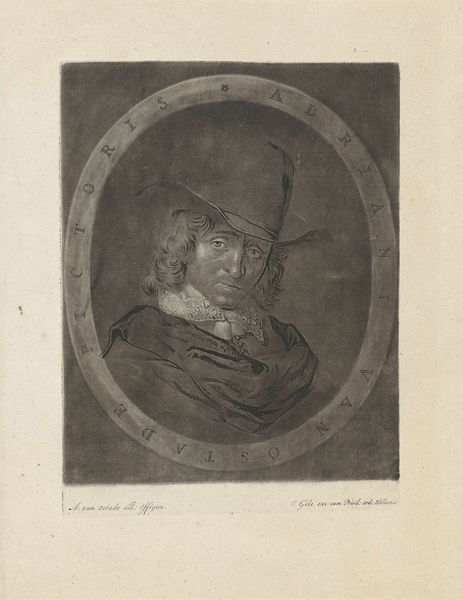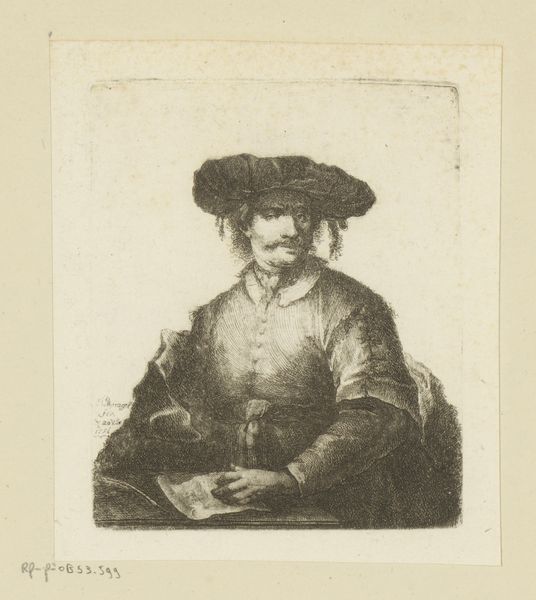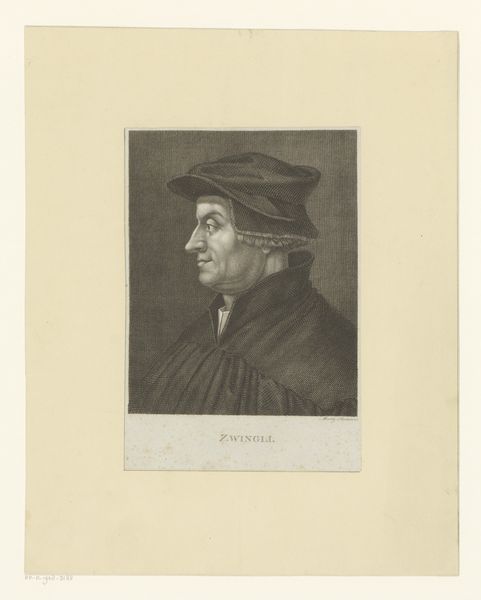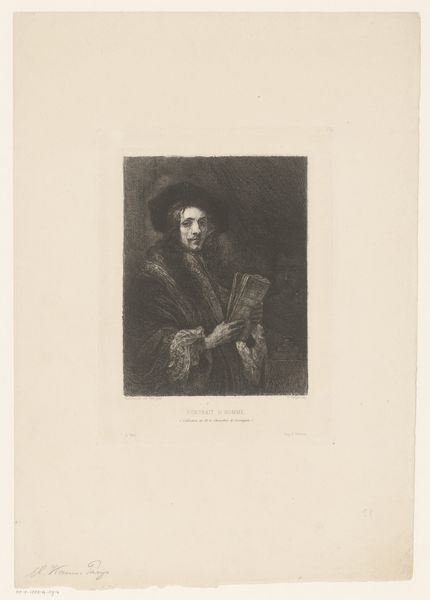
Dimensions: height 130 mm, width 114 mm
Copyright: Rijks Museum: Open Domain
Curator: Here we have Joseph Eisner's "Portrait of Rembrandt van Rijn," an engraving that the artist worked on sometime between 1798 and 1861. What strikes you about this image? Editor: Initially, the sharp contrast captures my attention—the intensity of the blacks against the stark white creates a really compelling yet somber mood. The subject looks thoughtful, maybe a bit weary. Curator: Yes, the chiaroscuro is quite pronounced, typical of baroque-inspired works. Look closely at the intricate network of lines Eisner used. Note the almost scientific precision in capturing the tonal gradations, turning a print into a compelling study of light and form. Editor: Speaking of light and form, considering the time this engraving was made, shouldn't we address the socio-political context in which an artist like Eisner chose Rembrandt as his subject? How might invoking the Dutch master’s image and legacy serve nationalist sentiments or perhaps speak to changing ideas about artistic genius? Curator: Certainly, such historical lenses add layers of meaning. Yet, formally, the composition is a fascinating exercise in framing. Observe how Eisner uses that squared frame both to contain and release Rembrandt’s portrait into a larger plane, pushing our attention back to its artifice as image. Editor: It feels a bit too neat, perhaps too reverential for the actual complexities of Rembrandt, who himself disrupted artistic conventions. Maybe this work speaks to how dominant artistic narratives tend to sanitize the more unruly elements of revolutionary figures to align them to certain ideological aims. Curator: An interesting tension emerges from that interpretation—Eisner consciously referencing and reshaping a revolutionary within the constraints of the print medium. In my perspective, it showcases how classical formal elements and representational expectations could still dominate. Editor: Ultimately, analyzing this print not just as a technical exercise but as a deliberate statement becomes so key. Its stark presentation of the artist emphasizes a controlled narrative about genius and influence, maybe overshadowing other more messy or collaborative parts of artistic creation at that time. Curator: A persuasive reading. This detailed engraving continues to challenge how we interpret not only representation itself, but artistic authority too. Editor: It reminds me that images, regardless of medium, actively participate in the construction of memory and legacy, offering a way of thinking about how and why Rembrandt still matters.
Comments
No comments
Be the first to comment and join the conversation on the ultimate creative platform.
